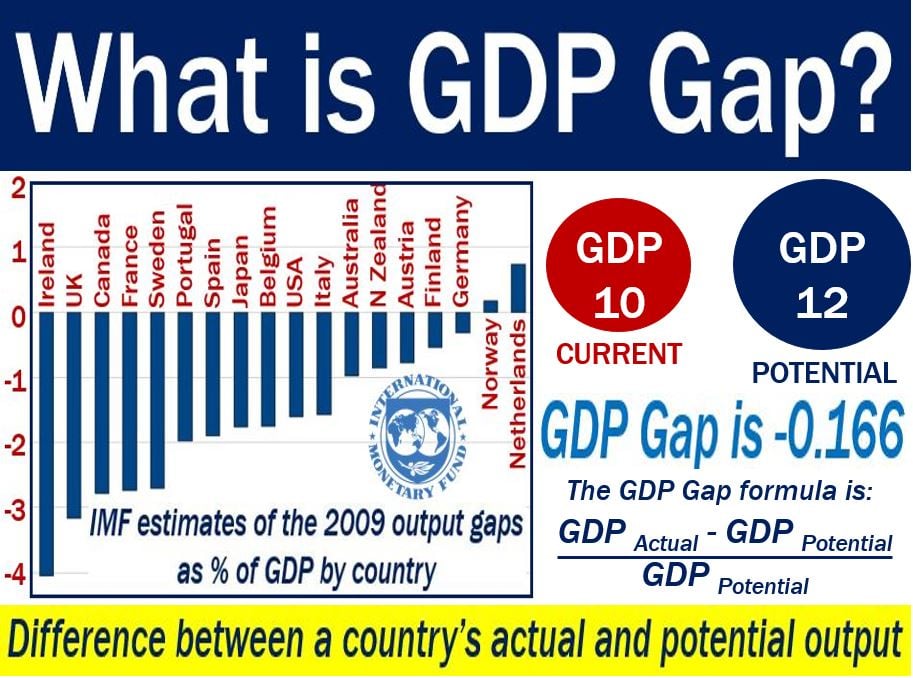GDP gap or output gap is the difference between a nation’s potential GDP and its current GDP. The gap refers to a specific time interval. In other words, GDP gap looks at what GDP could be versus what it is if employment and production levels were ideal. The potential GDP also includes maintaining price and currency stability.
GDP stands for Gross Domestic Product. In this article you will see the two terms – output gap and GDP gap. Remember that they have the same meaning.
If a country fails to create enough jobs for everybody willing to work, it is not producing as much as it could. What would GDP be if that country had full employment? The output gap is the difference between those two economic states.
The GDP gap is, in fact, the amount of production nationally that is irretrievably lost. There is potential for greater production. However, the economy wastes that potential production because unemployment is higher than it could be.
According to ft.com/lexicon, the Financial Times’ glossary of business and finance words, the output gap is:
“The difference between an economy’s current output and the estimated maximum potential output (full capacity).”

GDP gap – recession vs. boom
When a country’s economy falls into recession, the gap is positive, i.e., it is operating at less than full potential.
However, when there is an inflationary boom, the gap is negative, i.e., it is operating at greater than potential.
The output gap shows us how efficiently an economy is utilizing its raw materials, labor, and capital. In other words, how it is utilizing its productive resources.
It also shows us how much production the country is losing because it is not utilizing all its available labor.
Zero GDP gap is ideal
A zero GDP gap means that the country is operating at maximum capacity and at its most efficient point.
Country’s central banks and governments aim to achieve a zero gap, or the smallest gap possible. Zero output gap is ideal. Positive and negative gaps, however, show inefficiency.
Regarding positive, negative, and zero GDP gaps, reference.com writes:
“A gap value of zero shows that an economy is operating at its efficient point and maximum capacity.”
“Therefore, governments and central banks strive to maintain a small GDP gap since both negative and positive GDP gap values show inefficiency.”
Video – understanding the output gap
This Hi VIP video explains what the output gap is.
